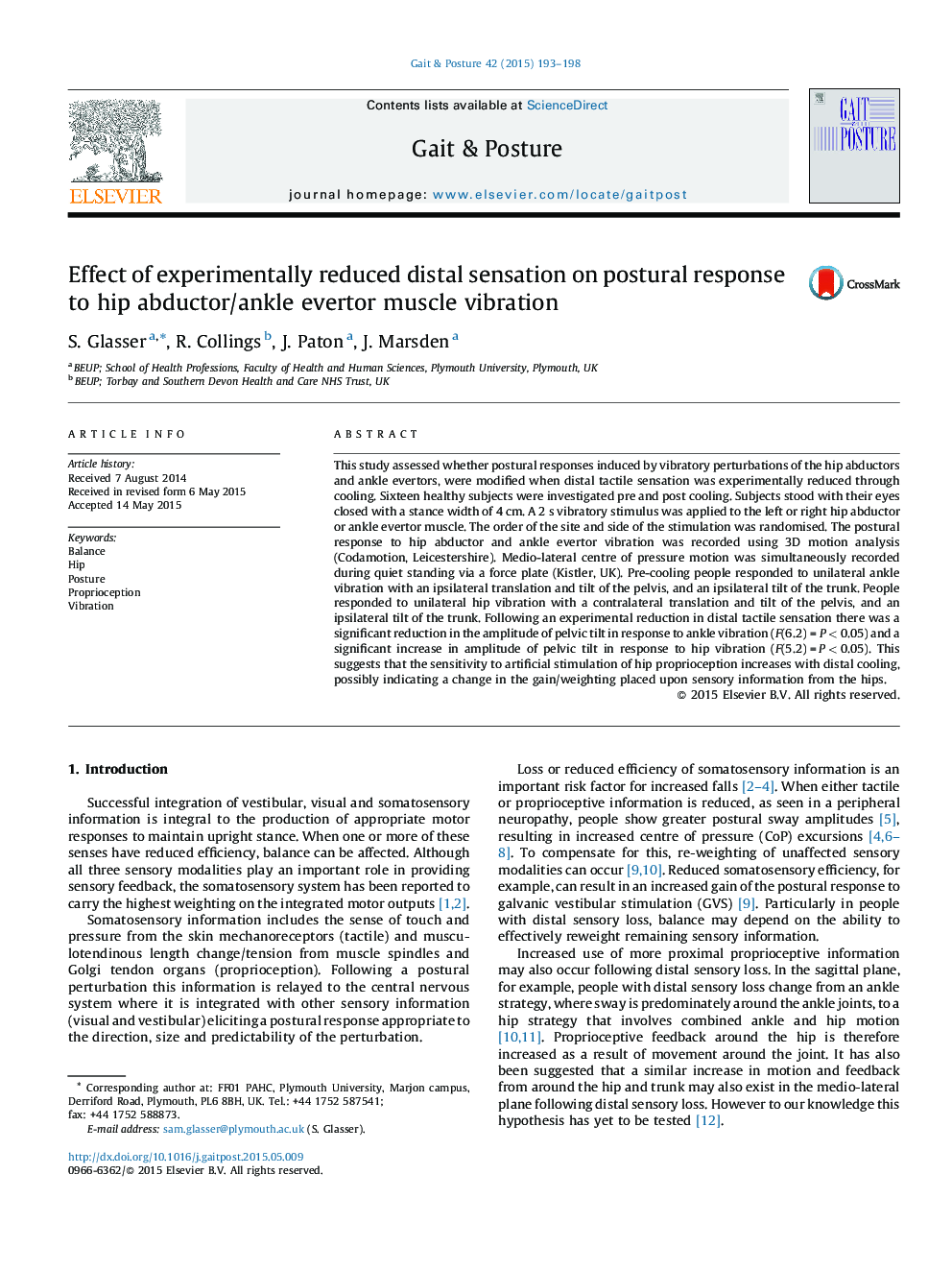| کد مقاله | کد نشریه | سال انتشار | مقاله انگلیسی | نسخه تمام متن |
|---|---|---|---|---|
| 6206029 | 1265637 | 2015 | 6 صفحه PDF | دانلود رایگان |
- Distal sensation was experimentally reduced through cooling.
- Postural responses to vibratory perturbations were recorded (3D motion/force plate).
- Cooling produced a decrease in pelvic tilt in response to ankle vibration.
- Cooling produced an increase in pelvic tilt in response to hip vibration.
- Suggests that with distal sensory loss reweighting of sensory information occurs.
This study assessed whether postural responses induced by vibratory perturbations of the hip abductors and ankle evertors, were modified when distal tactile sensation was experimentally reduced through cooling. Sixteen healthy subjects were investigated pre and post cooling. Subjects stood with their eyes closed with a stance width of 4Â cm. A 2Â s vibratory stimulus was applied to the left or right hip abductor or ankle evertor muscle. The order of the site and side of the stimulation was randomised. The postural response to hip abductor and ankle evertor vibration was recorded using 3D motion analysis (Codamotion, Leicestershire). Medio-lateral centre of pressure motion was simultaneously recorded during quiet standing via a force plate (Kistler, UK). Pre-cooling people responded to unilateral ankle vibration with an ipsilateral translation and tilt of the pelvis, and an ipsilateral tilt of the trunk. People responded to unilateral hip vibration with a contralateral translation and tilt of the pelvis, and an ipsilateral tilt of the trunk. Following an experimental reduction in distal tactile sensation there was a significant reduction in the amplitude of pelvic tilt in response to ankle vibration (F(6.2)Â =Â PÂ <Â 0.05) and a significant increase in amplitude of pelvic tilt in response to hip vibration (F(5.2)Â =Â PÂ <Â 0.05). This suggests that the sensitivity to artificial stimulation of hip proprioception increases with distal cooling, possibly indicating a change in the gain/weighting placed upon sensory information from the hips.
Journal: Gait & Posture - Volume 42, Issue 2, July 2015, Pages 193-198
